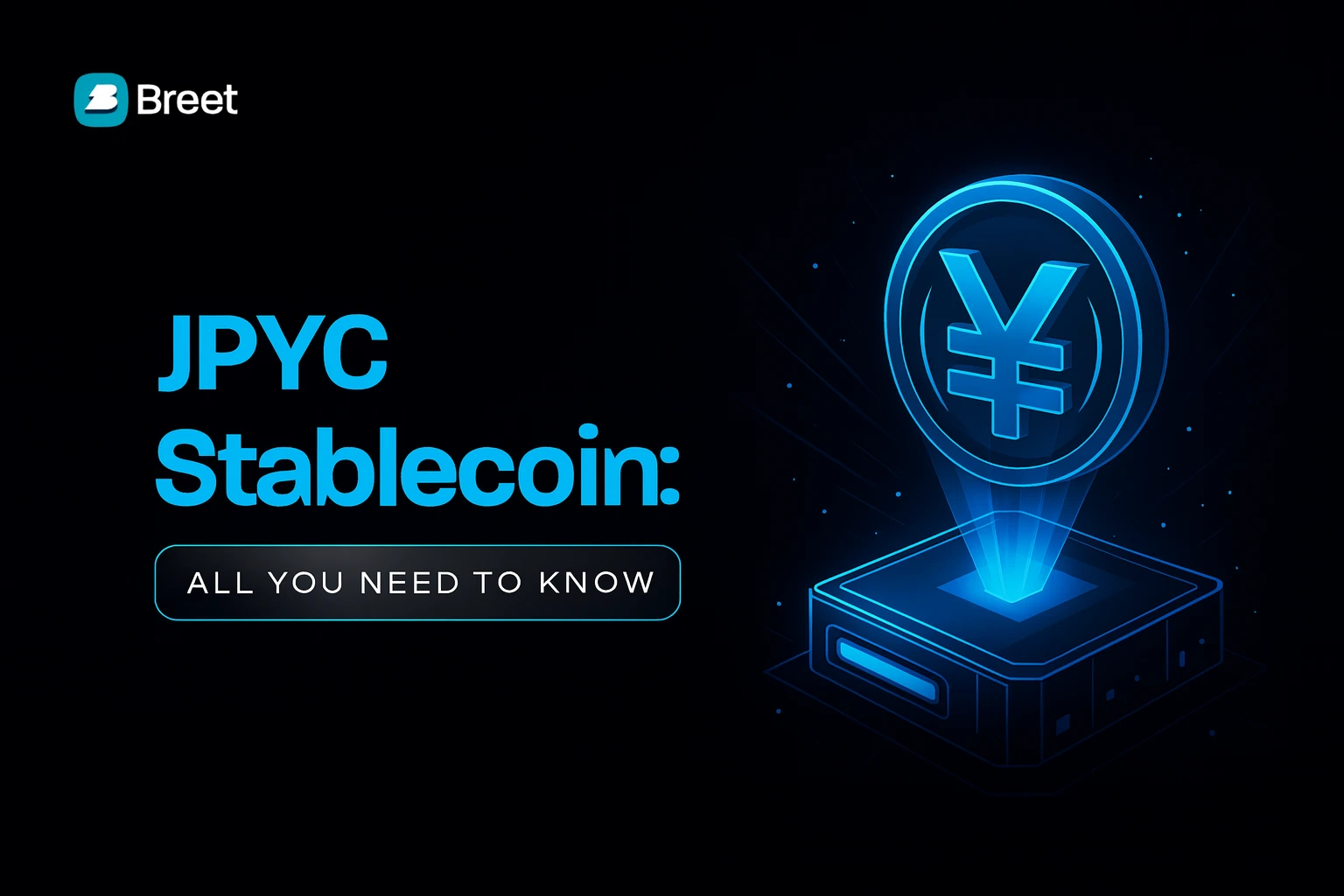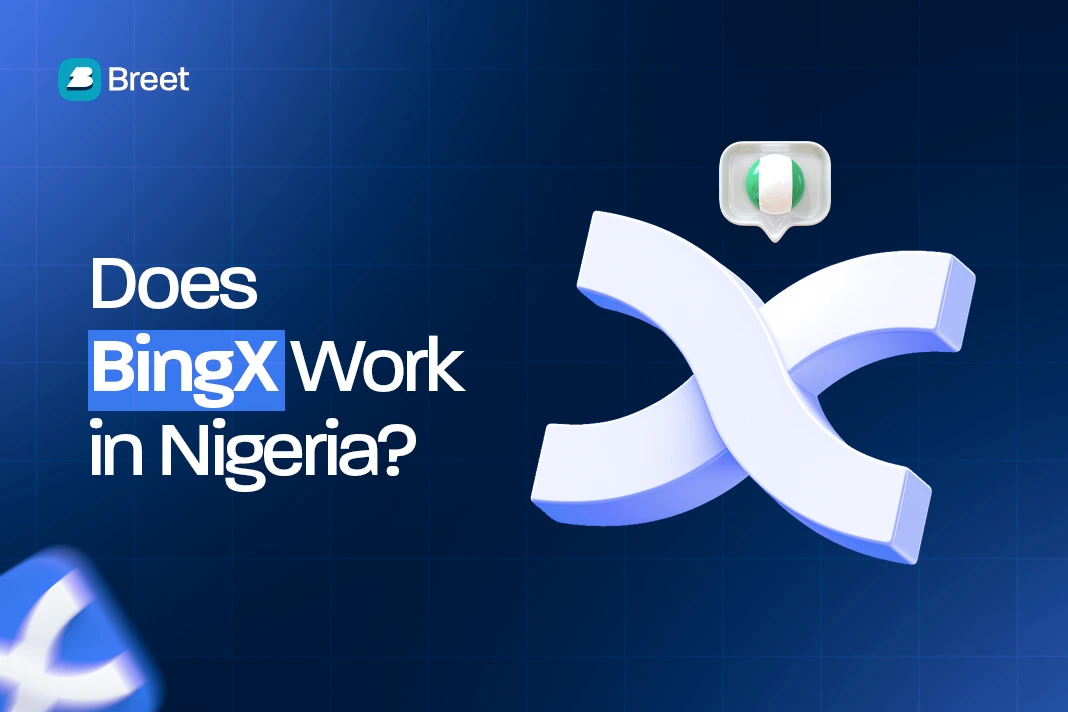The launch of JPYC stablecoin marks a major development in the world of digital currencies.
Issued by JPYC Inc., JPYC is a Japanese-yen-pegged stablecoin made to bring yen value stability onto public blockchains.
Unlike many stablecoins backed by global fiat, JPYC leverages domestic savings and Japanese government bonds (JGBs) to maintain its peg, making it a bridge between Japan’s traditional finance system and the digital asset ecosystem.
In this article, we’ll cover everything you need to know about the JYPC stablecoin and its impact in the crypto ecosystem.
Related:
- USDT TRC20 Contract Address: What is it & How to Get it?
What Is JPYC Stablecoin?
JPYC is a Japanese yen-pegged stablecoin designed to provide fast and low cost digital payments without the volatility of traditional cryptocurrencies.
Issued by JPYC Inc., the token maintains a 1:1 soft peg to the Japanese yen and operates on multiple blockchains, including Ethereum, Avalanche and Polygon.
Unlike traditional bank issued e-money, JPYC functions as a prepaid payment instrument under Japan’s regulatory framework, allowing users to spend or transfer value within approved ecosystems.
Its goal is to make digital yen transactions smooth for e-commerce, remittances, and cross-platform Web3 applications while being compliant with Japan’s evolving crypto law.
How JPYC Works: Technology & Backing
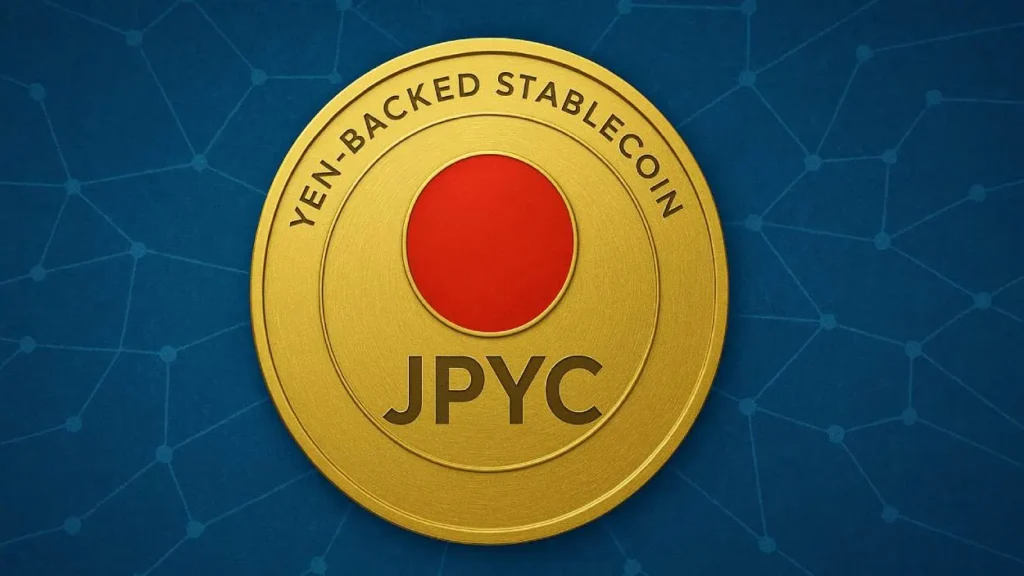
JPYC is a stable digital yen, offering predictable value through a mix of reserve management and regulatory oversight. Its stability and compliance come from the way it is issued, backed, and circulated across multiple blockchain networks.
1. Peg Mechanism: How JPYC Maintains Its Value
JPYC maintains its 1:1 soft peg with the Japanese yen (JPY) through a prepaid payment model, where tokens are issued only after users deposit yen with JPYC Inc. These funds are held in safeguarded accounts as required under Japan’s Payment Services Act.
2. Multi-Chain Support
JPYC is available across several major blockchains, making it easy to integrate with Web3 applications. It operates on these networks:
- Ethereum (ERC-20)
- Polygon
- Avalanche
- Shiden (Polkadot ecosystem)
- Arbitrum (increasingly used for low-fee stablecoin activity)
This multi-chain design enables fast cross network transfers, lower fees, and broader utility.
3. Issuance & Redemption Process
JPYC follows a simple but compliant issuance model where users deposit yen then JPYC Inc. mints and sends tokens on-chain. Redemptions work in reverse, where holders can request to convert JPYC back into yen through authorized channels or partners.
This structure ensures full reserve backing and prevents uncollateralized minting.
4. Regulation & Oversight
JPYC operates under the Payment Services Act (PSA) of Japan as a prepaid payment instrument, which imposes strict rules on reserve custody, maximum issuance thresholds, user protection and disclosures, and AML/CFT compliance.
Due to this legal structure, JPYC is categorized as a non-fully licensed stablecoin like USDC under U.S. frameworks, but also not an unregulated crypto asset.
Read Also:
- FUD Meaning in Crypto: A Complete Guide for Beginners
Key Features & Use Cases of JPYC
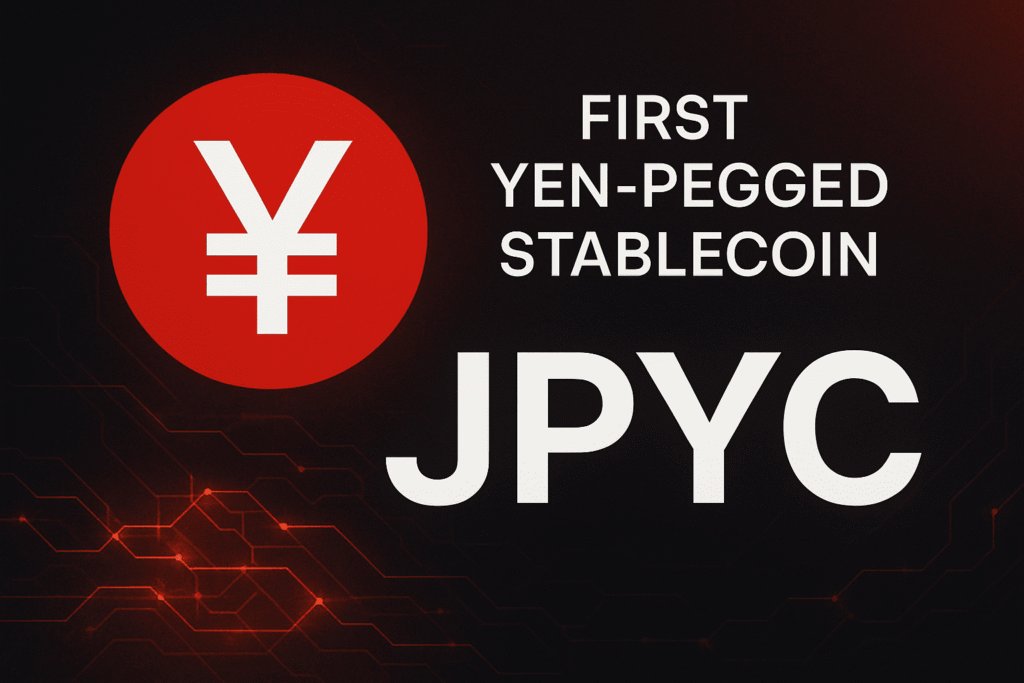
JPYC stands out as one of Japan’s most practical and innovative digital yen tokens. Its design focuses on low cost payments, regulatory compliance, and seamless Web3 integration, making it useful for both everyday users and businesses.
1. Ultra-Low Fees & Fast On-Chain Transfers
JPYC operates on multiple blockchains such as Polygon and Arbitrum, which allows users to enjoy:
- Low transaction fees
- Fast settlement times
- No need for traditional banking intermediaries
This makes JPYC attractive for micro-transactions, gaming payments, and day-to-day spending.
2. Strong Business Integrations
JPYC has been gradually building an ecosystem of merchants, protocols, and service providers that accept the token. Current and future integrations include:
- E-commerce stores that support JPYC for product purchases
- Travel, entertainment, and retail partners that accept digital yen through Web3 payment gateways
- DeFi platforms that allow staking, liquidity provision, and savings-like products using JPYC
- NFT marketplaces where users buy collectibles or access memberships using stable-value currency
3. Easy Conversion & Programmable Payments
As JPYC is issued as a tokenized prepaid asset, businesses can program it directly into automated payouts, subscription billing, platform rewards, and in-app digital economies.
It simplifies accounting and enables predictable, yen-denominated flows without touching traditional banking rails.
4. Cross-Border Efficiency
JPYC’s on-chain design makes it suitable for international payments and remittances. Its benefits include:
- Cheaper cross-border transfers compared to SWIFT
- No currency volatility, since the value is yen-denominated
- Compatibility with multi-chain bridges and cross-chain swaps
5. Built for Compliance & Consumer Protection
JPYC’s regulated classification under Japan’s Payment Services Act makes it attractive to institutions and enterprise users. Major benefits include:
- Transparency in issuance
- Protection of customer funds
- Predictable regulatory framework
- Clear auditability for corporate use
This level of compliance is rare among stablecoins globally, giving JPYC a credibility advantage.
Related:
- How to Generate a Free Bitcoin Invoice
Risks, Challenges & What to Watch Out For (JPYC Stablecoin)
While JPYC offers strong potential as a regulated, yen-pegged stablecoin, users and businesses should be aware of several key risks and challenges.
1. Regulatory & Compliance Risks
Stablecoins, including JPYC, operate in highly regulated digital asset environments.
Japan’s Financial Services Agency (FSA) imposes strict requirements on reserve custody, auditing, redemption procedures, and issuer licensing.
What this means:
- Regulatory updates could affect how users acquire, transfer, or redeem JPYC.
- New rules, especially those tied to Japan’s evolving stablecoin framework or cross-border payment oversight, may introduce additional compliance obligations.
- JPYC’s usability outside Japan may face jurisdictional restrictions, KYC limits, or crypto exchange listing challenges.
Why this matters: Regulatory risk can affect liquidity, adoption, and long-term accessibility.
2. Limited Adoption Outside Japan
Although JPYC is gaining traction, it is still primarily used within Japan focused ecosystems. Some of its major challenges in crossing borders include:
- Fewer global exchanges and wallets support JPYC compared to major stablecoins like USDT or USDC.
- International merchants may not accept yen stablecoins.
- The token’s value proposition is strongest for businesses operating in Japan, meaning global adoption may grow slowly.
Why this matters: Users outside Japan may experience restricted liquidity, limited off-ramps, and fewer integrations.
3. Liquidity Constraints vs. Larger Stablecoins
JPYC is much smaller in market capitalization than giants like USDT, USDC, and even regional stablecoins like EURR or XSGD. This creates practical considerations:
- Lower trading volume on exchanges may lead to slower conversions.
- Higher slippage can occur when buying or selling large amounts.
- Fewer trading pairs reduce flexibility for traders and institutional users.
Why this matters: This affects active traders, arbitrage users, and businesses handling high transaction volumes.
4. Competition From CBDCs
Japan continues exploring a Central Bank Digital Currency (CBDC), a digital yen issued directly by the Bank of Japan. If a CBDC launches:
- JPYC may face competition as the “official” digital yen becomes widely adopted.
- Banks and enterprises may prefer CBDCs for compliance simplicity.
- Some stablecoin use cases, such as domestic payments, may shift toward regulated government-backed CBDC infrastructure.
5. Technology & Smart Contract Risks
As an on-chain asset, JPYC relies on smart contracts across multiple blockchain networks such as Ethereum and Polygon. However, this comes with certain risks including:
- Smart contract vulnerabilities or exploits
- Network congestion leading to slow transaction confirmations
- Chain-specific outages or attacks, e.g., 51% attacks on smaller chains)
- User wallet risks such as phishing or compromised private keys
6. Market Perception & Stablecoin Oversaturation
The global stablecoin ecosystem is becoming crowded. JPYC competes with major stablecoins such as:
- USD stablecoins (USDT, USDC)
- Euro stablecoins (EURR, EURC)
- Asian stablecoins (XSGD, HKDD, THB-pegged assets)
- Payment-focused stablecoins (PYUSD, USDM, XAU-backed tokens).
As the competition grows, JPYC must demonstrate consistent utility, strengthen partnerships, and build liquidity and merchant acceptance. Doing this will determine adoption and long term demand.
Top Pick:
- 7 Best Crypto Profit Calculators
Why It Matters & What’s Next
JPYC isn’t just another stablecoin, its launch signals a turning point in how Japan approaches digital payments, blockchain adoption, and Web3 regulation.
Why JPYC Matters
1. A Bridge Between Traditional Finance and Web3
JPYC gives Japanese users a regulated digital currency they can trust, making it easier for:
- Traditional businesses to experiment with blockchain payments
- Fintech companies to integrate on-chain rails
- Users to move value without touching volatile crypto
It bridges a gap between old and new infrastructure, accelerating Japan’s digital transformation.
2. Expanding the Use of the Japanese Yen On-Chain
Until now, yen stablecoins had limited visibility. JPYC brings the JPY into global crypto ecosystems by supporting multiple blockchains, unlocking opportunities for:
- Cross-border remittances
- DeFi lending and borrowing
- Settlement layers for exchanges
- Merchant payments and e-commerce use
This positions the yen more competitively in a USD dominated stablecoin market.
3. Strengthening Consumer Protections
JPYC follows Japan’s strict e-money and stablecoin laws, which raises the bar for:
- Transparency
- Reserve audits
- Fraud prevention
- AML/KYC standards
In a global market burdened by collapses and unregulated issuers, JPYC stands out as a safe and compliant alternative.
What’s Next for JPYC?
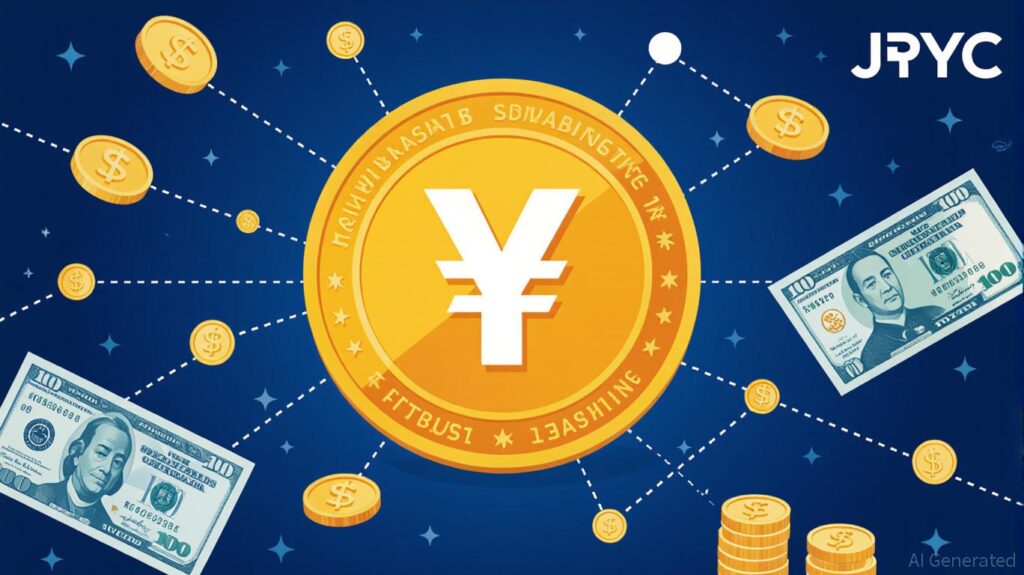
1. Expansion to More Blockchains
JPYC is expected to operate on more additional chains beyond Ethereum and Polygon.
Broader multi-chain support will help reduce transaction fees, increase liquidity, and boost adoption in global DeFi ecosystems, which is important for scaling internationally.
2. Deeper Integration With Japanese Businesses
JPYC’s issuer has signaled plans to partner with E-commerce platforms, Gaming companies, Transport and mobility services and Retail shops and ticketing systems.
These real-world integrations could make JPYC a mainstream digital payment method, and not just a crypto tool.
3. Improved Liquidity and Exchange Listings
As regulation around yen stablecoins evolves, more centralized exchanges are expected to list JPYC.
Increased liquidity will make it easier for traders to convert JPY on-chain, international users to access yen markets, and businesses to accept JPYC at scale, moving JPYC closer to USDT/USDC in utility within Japan.
4. Possible Collaboration With a Future Digital Yen (CBDC)
Japan is in the works of pushing out a CBDC.
While JPYC and a digital yen would serve different purposes, they could coexist, especially if JPYC becomes the commercial layer for retail payments, while the CBDC focuses on interbank settlement and monetary policy.
This hybrid model may define Japan’s Web3 economy in the 2030s.
Don’t Miss:
- Top 11 ways to Recover Lost or Stolen Bitcoin From Scammers
Conclusion
JPYC is emerging as one of the most important yen-backed stablecoins in Japan’s evolving digital economy.
Built on strong regulatory foundations, transparent reserves, and multi-chain support, it offers a secure way for users and businesses to move value on-chain without touching volatile assets.
Its low fees, compliant structure, and growing real-world integrations position it as a key player in Japan’s digital payments landscape.
As global interest in regulated stablecoins increases, JPYC is in a place to become a trusted bridge between traditional finance and blockchain technology.
FAQs About JPYC Stablecoin
Is JPYC a Stablecoin?
Yes, JPYC is a Japanese yen-pegged stablecoin issued by JPYC Inc., designed to maintain a 1:1 value with the JPY using fully backed reserves and blockchain-based issuance. It lets users send, store, and spend yen on-chain with low fees.
What blockchain networks does JPYC run on?
JPYC supports multiple chains, including Ethereum, Polygon, and other EVM-compatible networks. Its multi-chain approach reduces fees and increases accessibility.
Is JPYC regulated in Japan?
Yes. JPYC operates under Japan’s stablecoin framework, which requires issuers and intermediaries to meet strict compliance rules, including reserve custody and transparency.
What can I use JPYC for?
You can use JPYC for online payments, merchant transactions, DeFi participation, cross-border transfers, remittances, and Web3 applications across supported blockchains.
Can I convert JPYC back to Japanese yen?
Yes. JPYC can be redeemed for yen through regulated partners and redemption platforms that support withdrawal to Japanese bank accounts.
How does JPYC compare to USDT or USDC?
JPYC is yen-pegged and regulated under Japan’s strict stablecoin laws, while USDT and USDC are dollar-pegged and primarily used globally. JPYC is more suitable for Japan-focused payments and yen exposure.


